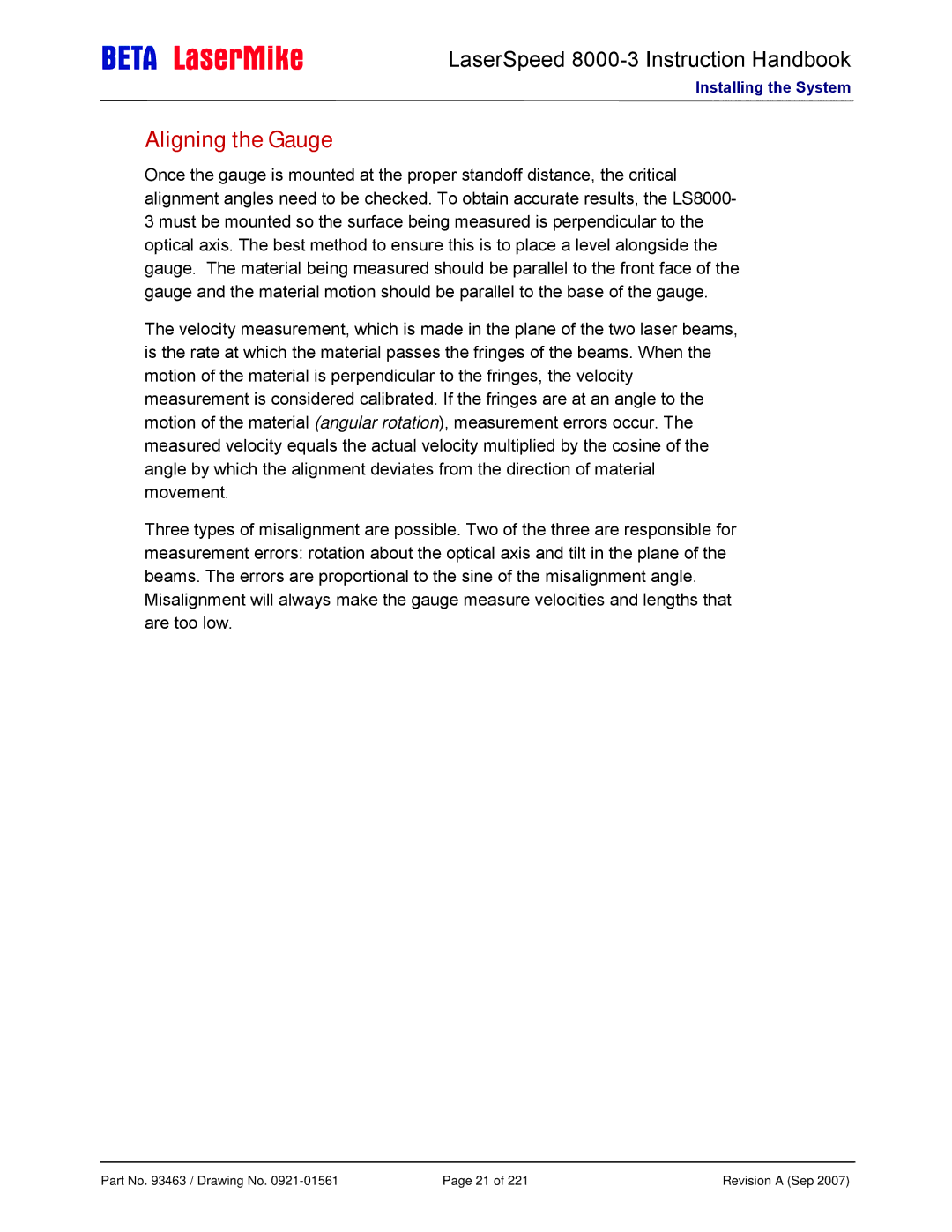
LaserSpeed
Installing the System
Aligning the Gauge
Once the gauge is mounted at the proper standoff distance, the critical alignment angles need to be checked. To obtain accurate results, the LS8000- 3 must be mounted so the surface being measured is perpendicular to the optical axis. The best method to ensure this is to place a level alongside the gauge. The material being measured should be parallel to the front face of the gauge and the material motion should be parallel to the base of the gauge.
The velocity measurement, which is made in the plane of the two laser beams, is the rate at which the material passes the fringes of the beams. When the motion of the material is perpendicular to the fringes, the velocity measurement is considered calibrated. If the fringes are at an angle to the motion of the material (angular rotation), measurement errors occur. The measured velocity equals the actual velocity multiplied by the cosine of the angle by which the alignment deviates from the direction of material movement.
Three types of misalignment are possible. Two of the three are responsible for measurement errors: rotation about the optical axis and tilt in the plane of the beams. The errors are proportional to the sine of the misalignment angle. Misalignment will always make the gauge measure velocities and lengths that are too low.
Part No. 93463 / Drawing No. | Page 21 of 221 | Revision A (Sep 2007) |
